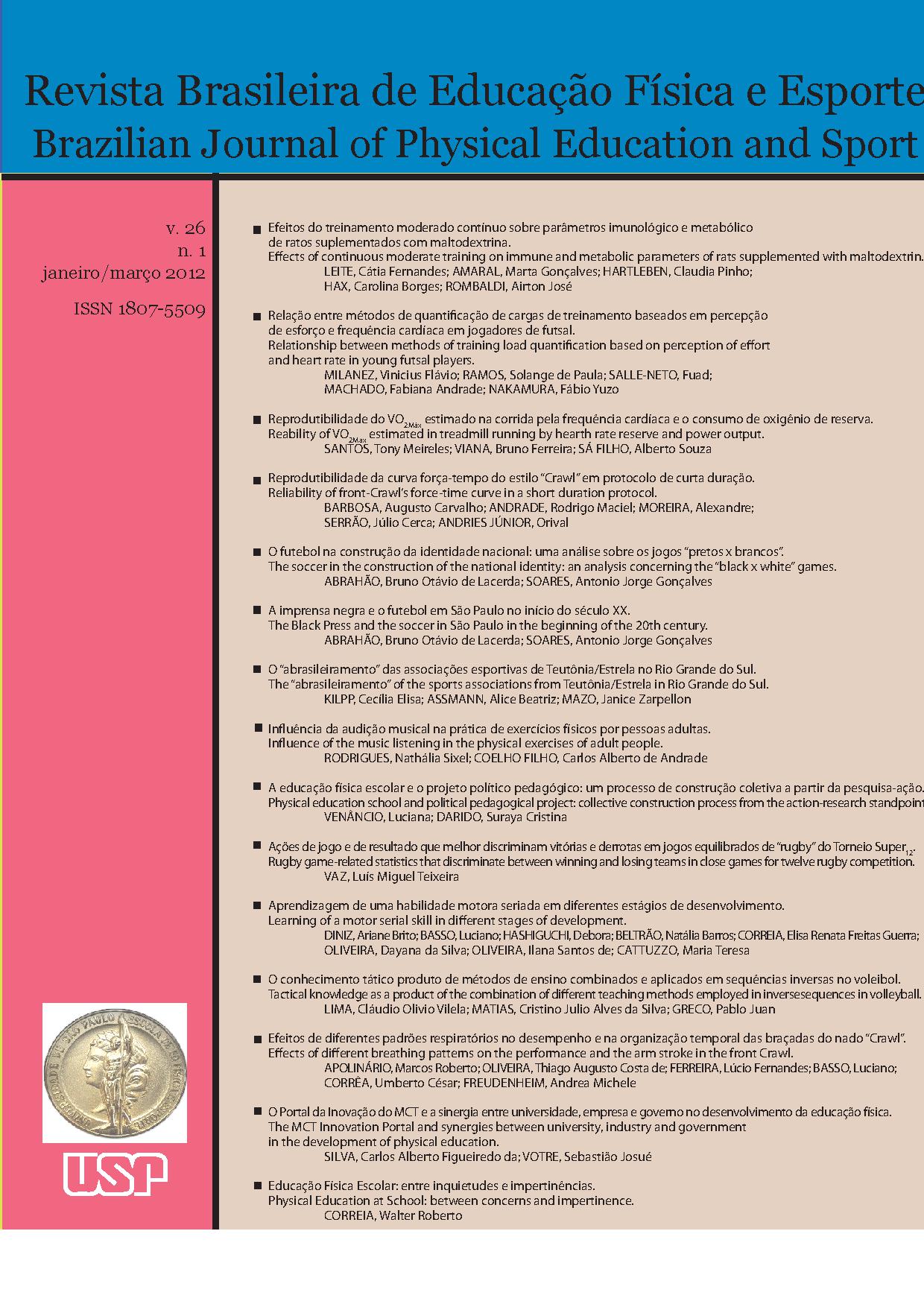O conhecimento tático produto de métodos de ensino combinados e aplicados em sequências inversas no voleibol
DOI:
https://doi.org/10.1590/S1807-55092012000100013Palabras clave:
Cognição e ação, Ensino-aprendizagem-treinamento, Jogos esportivos coletivosResumen
O objetivo desta pesquisa foi investigar as diferenças entre os métodos de ensino situacional e tradicional no desenvolvimento do conhecimento tático declarativo e processual nas sessões de treinamento de voleibol, bem como observar a influência da ordem de aplicação desses métodos no conhecimento tático. A amostra foi composta por 36 estudantes (sexo masculino - faixa etária de 12 a 14 anos), sendo 22 destes inscritos nas equipes escolares de voleibol e 14 não praticantes de voleibol (grupo controle). Um grupo iniciou o processo de ensino-aprendizagem-treinamento pelo método situacional (GST) e outro pelo método tradicional (GTS). Ao final de 15 sessões o método foi invertido e realizado o mesmo número de sessões. Para confirmar a execução do método de ensino foi empregada a observação e categorização dos treinos (STEFANELLO, 1999). Para a avaliação do conhecimento processual foi utilizado o teste KORA (MEMMERT, 2002), no parâmetro tático reconhecer espaços. Já no declarativo usou-se o teste de Conhecimento Tático em Situação de Ataque de Rede (PAULA, 2000). Os três grupos no pré-teste demonstram estar inicialmente no mesmo patamar de conhecimento tático declarativo e processual. No GST, ao se aplicar o método situacional (referente às 15 sessões iniciais), não houve diferença significativa no conhecimento tático declarativo, mas houve no processual convergente e divergente. Já no GTS, ao empregar o método tradicional, não se confirmou o desenvolvimento de nenhum dos conhecimentos táticos. Ao efetuar a inversão do método de ensino, no GST (30 sessões na sequência situacional-tradicional) foi apurada melhoria significativa de ambos os conhecimentos táticos processuais. Entretanto, o mesmo não ocorreu no GTS na sequência tradicional-situacional. Os resultados indicam que a sequência de treinamentos referentes ao GST proporcionou melhoras relevantes na inteligência e na criatividade tática dos jogadores.Descargas
Los datos de descarga aún no están disponibles.
Descargas
Publicado
2012-03-01
Número
Sección
Artigos Originais - Pedagogia e Comportamento
Licencia
Todo o conteúdo da revista, exceto onde está identificado, está licenciado sob uma Licença Creative Commons (CC-BY)
Cómo citar
Lima, C. O. V., Matias, C. J. A. da S., & Greco, P. J. (2012). O conhecimento tático produto de métodos de ensino combinados e aplicados em sequências inversas no voleibol . Revista Brasileira De Educação Física E Esporte, 26(1), 129-147. https://doi.org/10.1590/S1807-55092012000100013


